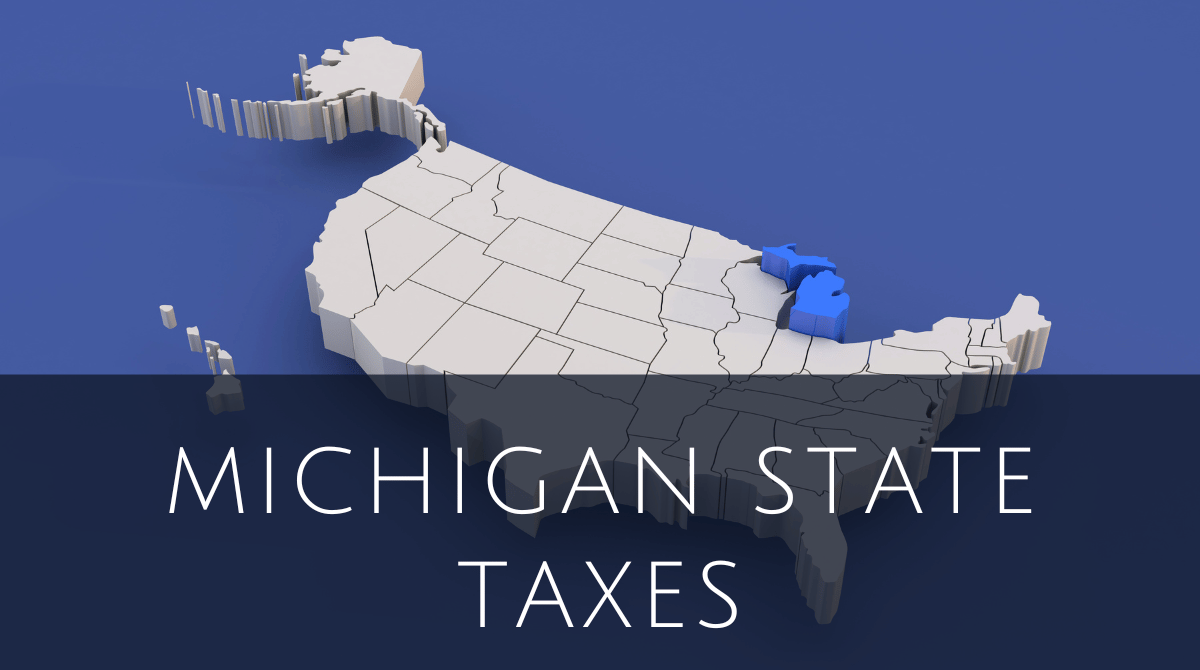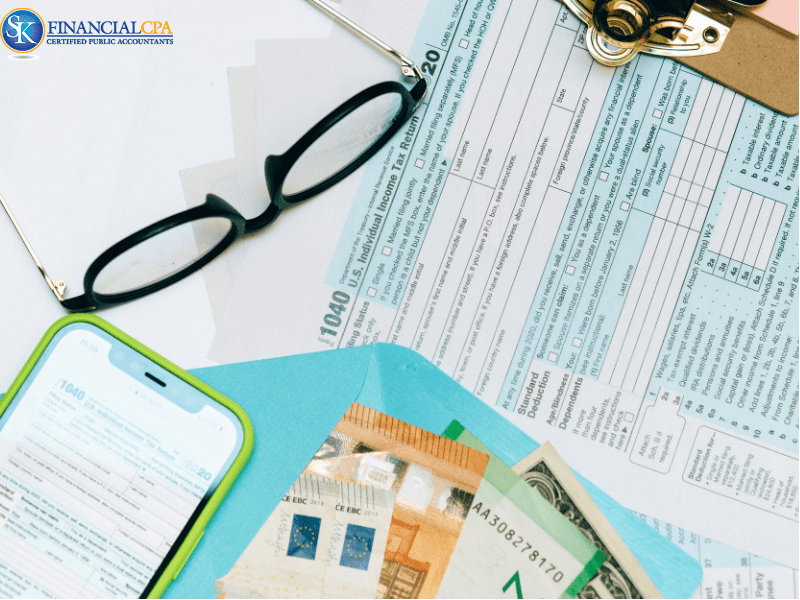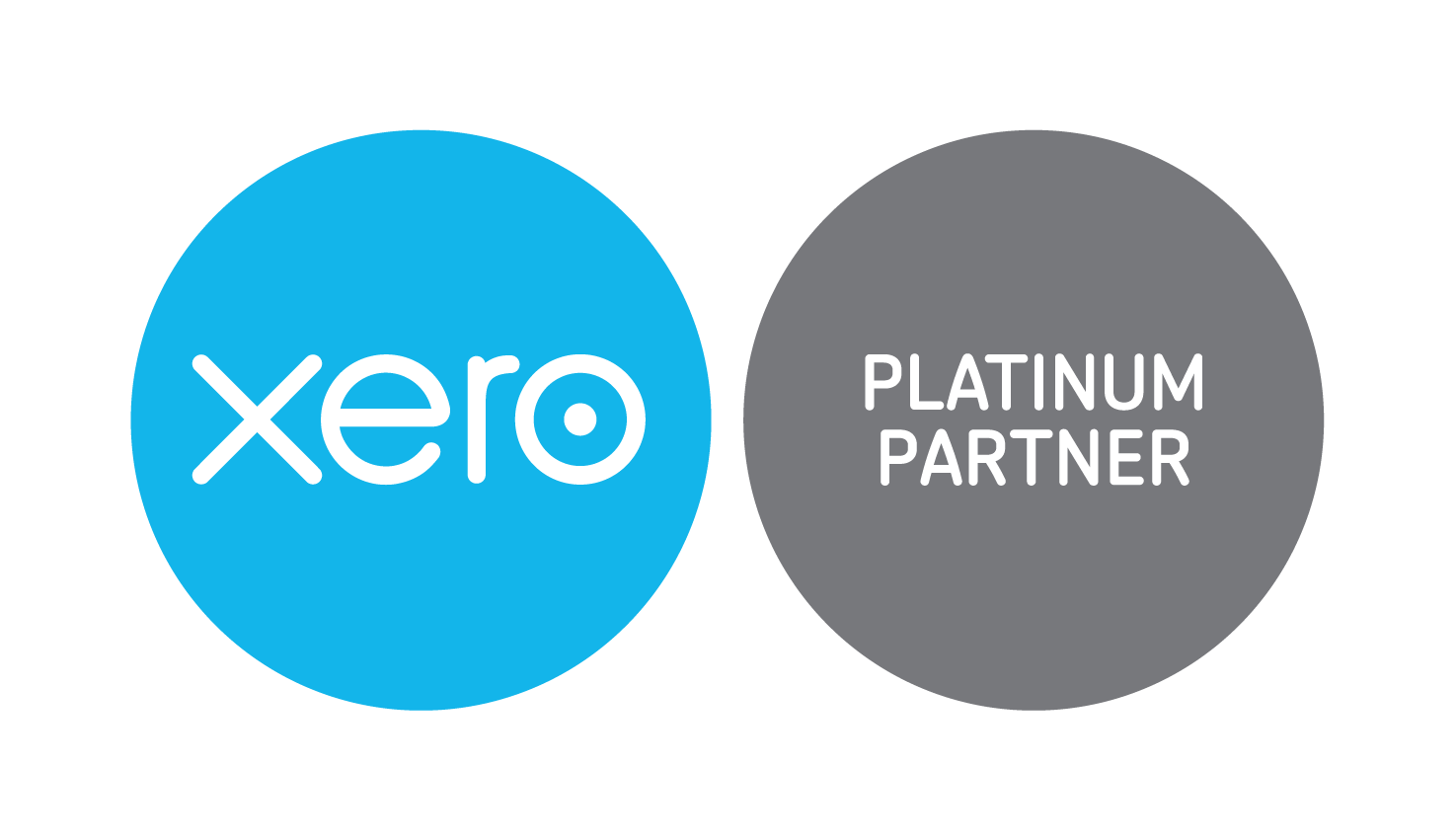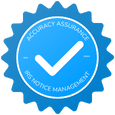
Your Michigan Tax Refund Status: Michigan Tax Refund Information
Tax season can be a time of anxiety for many, but it doesn't have to be. With a solid understanding of the Michigan tax refund process, you can navigate this period with ease and confidence. We will discuss all the information you need about filing your taxes in Michigan, including how refunds are calculated, common reasons for delays, how to check the status of your refund, and what to do if you owe taxes. Additionally, we will cover tax preparation assistance and some final tips to ensure a smooth tax season.
Understanding Michigan State Taxes
Before discussing refunds, it’s essential to understand the basics of Michigan state taxes. Michigan imposes a flat-rate income tax on residents, meaning everyone pays the same percentage of their income, regardless of their earnings. As of 2024, the flat tax rate is 4.25%.
Who Needs to File?
Residents and part-year residents of Michigan who meet certain income thresholds are required to file a state income tax return. If you are a non-resident who earned income in Michigan, you are also required to file a return. The income thresholds can vary, so it’s essential to check the Michigan Department of Treasury’s guidelines each year.
Filing Your Taxes
You can file your Michigan state taxes either electronically or by mailing in a paper return. Electronic filing (e-filing) is the preferred method for many due to its convenience, speed, and accuracy.
Required Forms
The primary form used for Michigan state taxes is the MI-1040. Depending on your situation, you may need to complete additional forms and schedules, such as:
-
Schedule 1: Additions and Subtractions from Income
-
Schedule NR: Nonresident and Part-Year Resident Schedule
-
Schedule W: Withholding Tax Schedule
-
Form 1040CR: Homestead Property Tax Credit Claim
These forms and instructions to help you complete them are available on the Michigan Department of Treasury’s website.
When to File
Michigan’s tax filing deadline typically aligns with the federal tax deadline, which is April 15th. If the deadline falls on a weekend or holiday, it is usually extended to the next business day. It’s crucial to file your return on time to avoid penalties and interest on any taxes owed.
How to Check the Status of Your Michigan Tax Refund
The Michigan Department of Treasury offers several ways to check the status of your tax refund. The most convenient option is the “Where’s My Refund?” online tool.
Using "Where's My Refund?"
To use the "Where's My Refund?" tool, you’ll need:
-
Your Social Security number
-
The tax year of your return
-
Your adjusted gross income (AGI) or total household resources (THR) from your return
The tool provides updated information daily, so checking it regularly can give you the latest status of your refund.
Other Methods to Check Your Refund Status
If you prefer not to use the online tool, you can check the status of your refund by:
-
Call the Michigan Department of Treasury's automated refund hotline at 517-636-4486. Have your Social Security number and AGI or THR ready.
-
If you prefer, you can write to the Michigan Department of Treasury to inquire about your refund. Include your Social Security number, tax year, and other relevant details.
Understanding Your Refund Status
When you check the status of your refund, you might see various messages indicating where your return is in the process. Common statuses include:
-
Your return has been received and is being processed.
-
Your refund has been approved and is being prepared for issuance.
-
Your refund has been sent, either by direct deposit or paper check.
If your return has issues, such as errors or missing information, you might see messages indicating these problems and any actions you need to take.
You can find more information about your Michigan refund at the following website:
- https://www.michigan.gov/taxes/iit/refund
Direct Deposit vs. Paper Check
When you file your return, you can choose how you’d like to receive your refund. Each method has pros and cons.
Direct Deposit
Direct deposit is the fastest and most secure way to receive your refund. Your refund will be electronically deposited into your bank account, usually within a few days of being issued. To use direct deposit, you’ll need to provide your bank’s routing number and your account number on your tax return.
Paper Check
If you prefer, you can receive your refund by paper check. This method takes longer because the check must be printed and mailed to you. If you choose this option, make sure your address is correct on your tax return to avoid delays or lost checks.
How Michigan Tax Refunds Are Calculated
Your Michigan tax refund is the difference between the total amount of state income tax you owe for the year and the amount you’ve already paid through withholding or estimated tax payments. If you’ve overpaid, you’ll receive a refund; if you’ve underpaid, you’ll owe the state the difference.
Withholding and Estimated Payments
Most taxpayers have state income tax withheld from their paychecks throughout the year. This is done by your employer based on the information you provide on your Michigan W-4 form. If you’re self-employed or have other sources of income not subject to withholding, you may need to make estimated tax payments throughout the year.
Tax Credits and Deductions
Michigan offers several tax credits and deductions that can reduce your taxable income and, consequently, the amount of tax you owe. Some common credits include:
-
Homestead Property Tax Credit is available to homeowners and renters who meet certain income and property value limits.
-
Earned Income Tax Credit (EITC) is A refundable credit for low- to moderate-income working individuals and families.
-
The City Income Tax Credit is for residents who live in cities with their income tax.
These credits and deductions can significantly impact your final tax bill and potentially increase your refund.
Common Reasons for Refund Delays
While most Michigan tax refunds are issued within a few weeks, various factors can cause delays. Understanding these common reasons can help you avoid them and get your refund faster.
Errors on Your Return
Simple mistakes are one of the most common causes of refund delays. These can include:
-
Incorrect Social Security numbers
-
Math errors
-
Inaccurate income reporting
-
Missing signatures on paper returns
-
Incorrect bank account information for direct deposit
Double-checking your return before submission can help prevent these errors.
Incomplete Information
If you fail to provide all required information or necessary supporting documents, your refund could be delayed. This includes forms like W-2s, 1099s, and other relevant documentation.
Identity Verification
To protect against fraud, the Michigan Department of Treasury may require you to verify your identity. This process can add extra time to the processing of your return. You might receive a letter asking for additional documentation to confirm your identity.
Amended Returns
If you file an amended return using Form MI-1040X, it can take longer to process than an original return. Amended returns require a more detailed review, which can delay your refund.
Outstanding Debts
If you owe past-due state taxes, child support, or other debts, the state may apply your refund to these balances. This process, known as an offset, can delay the issuance of your refund.
System Issues
Occasionally, technical issues or high volumes of returns can cause delays in processing refunds. This is often beyond your control, but understanding that it can happen may alleviate some stress.
What to Do If You Owe Taxes
If you owe taxes instead of receiving a refund, it’s important to pay your tax bill by the due date to avoid penalties and interest. Michigan offers several payment options to make this process easier.
Payment Options
-
You can pay online using the Michigan Department of Treasury’s e-Pay system. This allows you to pay directly from your bank account or by credit card.
-
If you prefer to pay by mail, you can send a check or money order with a payment voucher (Form MI-1040-V) to the address specified on the form.
-
If you can’t pay your tax bill in full, you may be eligible for an installment agreement. This allows you to make monthly payments until your balance is paid off. You must apply for this arrangement and get approval from the Michigan Department of Treasury.
Penalties and Interest
Paying your taxes late can result in penalties and interest. The penalty for late payment is 5% of the unpaid tax for the first two months, then an additional 5% for each subsequent month, up to a maximum of 25%. Interest is also charged on the unpaid tax from the due date until the date of payment.
Tax Preparation Assistance
Preparing your tax return can be complex, especially if you have a complicated financial situation. Fortunately, there are resources available to help you. SK Financial CPA help you in all situation of taxes. Whatever your tax situation, we’re here to assist. SK Financial CPA's expertise ensures your business stays compliant and optimized.
Professional Tax Services
Hiring a professional tax preparer or accountant can be a good investment, especially if you have a complex tax situation. These professionals can help ensure that your return is accurate and that you take advantage of all available credits and deductions.
Tax Preparation Software
Many taxpayers find that using tax preparation software makes the process easier and more efficient. Programs like TurboTax, H&R Block, and TaxAct guide you through the process step-by-step, helping to minimize errors and maximize your refund.
Free Tax Help
The Volunteer Income Tax Assistance (VITA) program offers free tax help to those who qualify. VITA services are available to people who generally make $60,000 or less, persons with disabilities, and limited English-speaking taxpayers. Trained volunteers prepare basic income tax returns with electronic filing.
The Tax Counseling for the Elderly (TCE) program offers free tax help to individuals aged 60 and older. TCE volunteers specialize in questions about pensions and retirement-related issues unique to seniors.
Tips for a Smooth Tax Season
To ensure a smooth tax season and avoid common pitfalls, follow these tips:
File Early
Filing your tax return early can help you avoid the last-minute rush and potential delays. It also gives you more time to address any issues that might arise.
Double-Check Your Return
Before submitting your return, review it carefully to ensure all information is accurate and complete. Double-check your Social Security number, income figures, and any deductions or credits you’re claiming.
Keep Good Records
Maintain copies of your tax return and all supporting documents for at least seven years. This includes W-2s, 1099s, receipts for deductible expenses, and any other relevant paperwork. Good record-keeping can make filing next year’s return easier and help if you ever need to amend your return or respond to an audit.
Use Direct Deposit
If you’re expecting a refund, choose direct deposit for faster and more secure delivery. Ensure your bank account information is accurate to avoid delays.
Pay Attention to Deadlines
Missing the tax filing deadline can result in penalties and interest, even if you’re owed a refund. Mark your calendar and set reminders to ensure you file on time.
Seek Help If Needed
If you’re unsure about any aspect of your tax return, don’t hesitate to seek help. Whether it’s consulting a professional, using tax software, or taking advantage of free assistance programs, getting
the help you need can save you time, stress, and potentially money.
Stay Informed
Tax laws and regulations can change, so it’s important to stay informed about any updates that might affect your filing. The Michigan Department of Treasury’s website is a good resource for the latest information.
Detailed Walkthrough of Filing Michigan State Taxes
Step-by-Step Guide
Here’s a detailed step-by-step guide to filing your Michigan state taxes:
Step 1: Gather Your Documents
Before you begin your tax return, gather all necessary documents, including:
-
W-2 Forms: From all employers
-
1099 Forms: For other income such as freelance work, interest, and dividends
-
Statements for deductions: Such as mortgage interest, student loan interest, and property taxes
-
Receipts for credits and deductions: Including charitable donations, medical expenses, and education expenses
Step 2: Choose Your Filing Method
Decide whether you will file electronically or by mail. E-filing is faster and generally more accurate. If you choose to e-file, select a reputable tax preparation software or service.
Step 3: Complete Your MI-1040 Form
Start with the MI-1040 form. Here’s a breakdown of what you’ll need to fill out:
-
Personal Information: Your name, address, Social Security number, and filing status
-
Income: Total all sources of income, including wages, interest, dividends, and business income
-
Deductions: Enter any adjustments to income such as student loan interest or IRA contributions
-
Tax and Credits: Calculate your state tax liability and apply any credits
-
Payments: Enter the amount of Michigan tax withheld from your paychecks and any estimated tax payments
Step 4: Complete Additional Schedules
Depending on your situation, you may need to complete additional schedules:
-
Schedule 1 (Additions and Subtractions) For adjustments to income
-
Schedule NR (Nonresident and Part-Year Resident Schedule) If you were a nonresident or part-year resident
-
Schedule W (Withholding Tax Schedule) For reporting withholding tax
-
Form 1040CR (Homestead Property Tax Credit) If you qualify for the homestead property tax credit
Step 5: Review Your Return
Carefully review your completed tax return. Check for accuracy in all entries, especially Social Security numbers, income amounts, and bank account information if opting for direct deposit.
Step 6: Submit Your Return
If e-filing, follow the software’s instructions to submit your return electronically. If filing by mail, print your return, sign it, and mail it to the address provided on the MI-1040 form instructions.
Step 7: Pay Any Taxes Owed
If you owe taxes, choose a payment method. You can pay online using the e-Pay system, by credit card, or by mailing a check or money order with a payment voucher.
Understanding and Claiming Tax Credits
Homestead Property Tax Credit
The Homestead Property Tax Credit can provide significant relief if you qualify. Here’s how to determine your eligibility and claim the credit:
Eligibility
To qualify, you must meet the following criteria:
-
Your homestead is in Michigan
-
You were a Michigan resident for at least six months during the tax year
-
Your total household resources are below a certain threshold, which is adjusted annually
-
Your property taxes were levied, or you paid rent on a homestead subject to property taxes
Calculating the Credit
The credit is based on the property taxes paid on your homestead or the rent you paid. Use Form MI-1040CR to calculate and claim the credit. The form instructions will guide you through the calculation.
Earned Income Tax Credit (EITC)
The EITC is a refundable credit for low- to moderate-income working individuals and families. Michigan’s EITC is a percentage of the federal EITC.
Eligibility
To qualify for the Michigan EITC, you must first be eligible for the federal EITC. Generally, you must meet the following criteria:
-
Have earned income from employment or self-employment
-
Meet certain income limits, which vary based on your filing status and number of qualifying children
Handling Tax Refund Delays
Addressing Errors
If your refund is delayed due to errors on your return, such as incorrect Social Security numbers or mathematical mistakes, it’s essential to correct these as soon as possible. You may receive a notice from the Michigan Department of Treasury requesting clarification or additional information. Follow the instructions provided carefully and respond promptly to resolve the issue and expedite your refund.
Providing Missing Information
If your refund is delayed because of missing information or required documents, gather the necessary paperwork and submit it as instructed. This might include W-2s, 1099s, or other income statements, as well as any relevant receipts or documentation for deductions or credits claimed on your return. Keep copies of all documents for your records.
Identity Verification Process
In cases where the Michigan Department of Treasury needs to verify your identity, you may receive a letter requesting specific documentation. Common forms of verification include providing copies of government-issued identification, such as a driver’s license or passport, along with additional documents to confirm your identity. Respond promptly to any requests to avoid further delays in processing your refund.
Amended Returns
If you file an amended return using Form MI-1040X, it’s important to understand that this can prolong the processing time for your refund. Amended returns require a detailed review by the Michigan Department of Treasury, and it may take several weeks or even months to receive a resolution. Be patient and check the status of your amended return regularly using the same methods as for an original return.
Contacting the Michigan Department of Treasury
If you have questions or concerns about the status of your refund or need assistance with resolving any issues, don’t hesitate to contact the Michigan Department of Treasury directly. Their customer service representatives can provide guidance and support to help you navigate the process and ensure that your refund is processed as quickly as possible.
Conclusion
Understanding the Michigan tax refund process and how to maximize your refund can help alleviate stress and ensure that you receive the maximum benefit from your tax return. By familiarizing yourself with the filing requirements, addressing any potential delays proactively, and taking advantage of available tax credits and deductions, you can navigate tax season with confidence and peace of mind. Remember to file your return on time, keep accurate records of all financial transactions, and seek assistance if needed. With careful planning and attention to detail, you can make the most of your Michigan tax refund and achieve your financial goals.
Follow SKFinancial on Facebook / Twitter / Linkedin / Youtube for updates.












